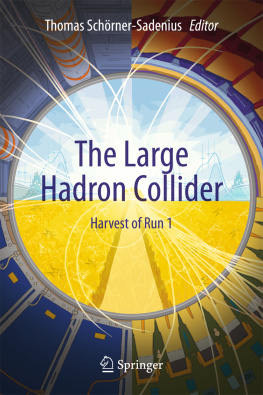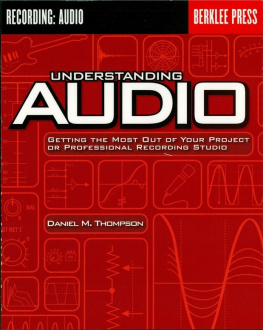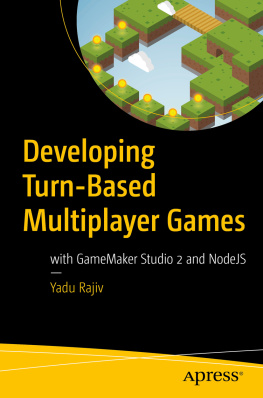Springer International Publishing Switzerland 2015
Thomas Schrner-Sadenius (ed.) The Large Hadron Collider 10.1007/978-3-319-15001-7_1
1. The Large Hadron ColliderBackground and History
Thomas Schrner-Sadenius 1
(1)
DESY, Notkestr. 85, 22607 Hamburg, Germany
Thomas Schrner-Sadenius
Email:
Abstract
This introductory chapter gives a short account of the history of the Large Hadron Collider (LHC) project, i.e. it describes the rationale for the LHC, the situation of high energy physics in the period in which the LHC was initially conceived, and the development of the project from first ideas to first beams in the machine. In doing so, some emphasis is put on the comparison of the LHC with other

or

collider projects, which are also discussed from a historical point of view. Finally, the development of the LHC experimental collaborations is sketched.
1.1 The LHCA Marvel in Every Respect
The Large Hadron Collider (LHC) is clearly a marvel of technology. The collider itself, the cryogenics installations and the experiments were all ground-breaking endeavours at the technological frontier, and the sheer size and complexity of the machines and their intrinsic beauty fascinate scientists and laypersons alike. Also the necessary civil-engineering work posed numerous awe-inspiring challenges. But the LHC is remarkable also in many other, less technical, respects:
The LHC lifespan from first ideas to the last publication will, according to plan, amount to about six decadesenough to touch the careers of four generations of scientists.
The number of people involved in the creation or the exploitation of the project easily reaches 10,000, and the fact that the management of the project relies chiefly on common sense and commitment without strong hierarchy and only lean formalised responsibility sets a guiding example for other projects involving people from different backgrounds, cultures and nationalities. The common cause seems to be a very strong motivator in keeping individual institutes on track [].
In order to understand and fully appreciate the immense effort that made the LHC a reality, a little digression into history is indicated.
1.1.1 The Origins of the LHC
The LHCor the option of a hadron collider in the tunnel of the Large Electron-Positron Collider (LEP) at CERNwas reportedly first mentioned [].
By 1977, electron-positron colliders were well established, but hadron accelerators had so far exclusively been working in fixed-target modeexcept for the Intersecting Storage Rings (ISR) at CERN, which, since 1971, were colliding protons with beam energies of up to 31.4 GeV (see Sect. ).
Lepton colliders had already provided interesting results, like the co-discovery (together with a fixed-target hadron machine) of the

and thus of charm in 1974. However, the wish of particle physicists to go to ever higher centre-of-mass energies posed a severe problem to lepton colliders: The energy loss due to synchrotron radiation increases with the fourth power of a particles energy. The fact that the energy loss per turn also scales with the inverse of the bending radius favours large acceleratorslike LEP. Since there are, naturally, restrictions to the possible size of accelerators, also the achievable energy is limited for circular lepton colliders. However, the energy loss also goes with the inverse of the particle mass to the fourth power. So one way to realise collisions at higher energies is to choose protons as beam particles. Hadron collidersso it seemedare the only way towards the discovery of new physics phenomena at highest energies. And ideas for such new phenomena abounded already in the late 1970s!
1.1.2 The Picture of the Microcosm Around 1977
By 1977, a large fraction of what came to be known as the Standard Model (SM) of particle physics was well established. At the same time, numerous questions remained unanswered, which were at the top of the research agenda of high energy physics.
Already in the 1960s, the zoo of strongly interacting particles had been organised with the invention of the eightfold way and of quarks by Gell-Mann, Zweig, Neeman and others. Gell-Mann was awarded the 1969 Nobel Prize in Physics for his contributions.
There was a model for the generation of mass for gauge bosonsthe BEH mechanism invented around 1964 by Brout, Englert, Guralnik, Hagen, Higgs and Kibble, which led to the 2013 Nobel Prize in Physics for Englert and Higgs. There was, however, no direct experimental evidence of the existence of a Higgs particle that was a necessary ingredient of the theory.
Around 1967, electroweak interactions and the BEH mechanism had been merged by Glashow, Salam and Weinberg (GSW) into a renormalisable gauge theory (rewarded by the 1979 Nobel Prize in Physics). The gauge bosons of this theory (

,

) were only discovered in 1983 at the Sp

Salthough charged-current interactions were already well established.
The GIM mechanism (GlashowIliopoulosMaiani, 1970) had postulated the existence of a fourth quark beyond the well established

,

and

quarks; the discovery of the fourththe

or charmquark through the measurement of

mesons in 1974 in both

collisions and fixed-target experiments beautifully confirmed this hypothesis (1976 Nobel Prize for Richter and Ting).
In 1973, the GARGAMELLE experiment at CERN had discovered neutral-current interactions in neutrino experiments, thus indirectly confirming the existence of heavy neutral gauge bosons (

bosons) as predicted by the GSW theory. GARGAMELLE also discovered that only about 50 % of the protons momentum is carried by its charged constituents, the quarks.
Another important discovery of the year 1973 was that of asymptotic freedoma key ingredient of QCDby Gross, Politzer and Wilczek (2004 Nobel Prize).
Also in 1973, at the CERN ISR collider, high-

particles had been observed. This and other breakthroughs in strong-interaction physics made quantum chromodynamics (QCD), as formulated in 1973, a serious contender for a gauge theory of strong interactions. Gluons, the postulated gauge bosons of QCD, were only discovered at the PETRA












 or
or  collider projects, which are also discussed from a historical point of view. Finally, the development of the LHC experimental collaborations is sketched.
collider projects, which are also discussed from a historical point of view. Finally, the development of the LHC experimental collaborations is sketched. and thus of charm in 1974. However, the wish of particle physicists to go to ever higher centre-of-mass energies posed a severe problem to lepton colliders: The energy loss due to synchrotron radiation increases with the fourth power of a particles energy. The fact that the energy loss per turn also scales with the inverse of the bending radius favours large acceleratorslike LEP. Since there are, naturally, restrictions to the possible size of accelerators, also the achievable energy is limited for circular lepton colliders. However, the energy loss also goes with the inverse of the particle mass to the fourth power. So one way to realise collisions at higher energies is to choose protons as beam particles. Hadron collidersso it seemedare the only way towards the discovery of new physics phenomena at highest energies. And ideas for such new phenomena abounded already in the late 1970s!
and thus of charm in 1974. However, the wish of particle physicists to go to ever higher centre-of-mass energies posed a severe problem to lepton colliders: The energy loss due to synchrotron radiation increases with the fourth power of a particles energy. The fact that the energy loss per turn also scales with the inverse of the bending radius favours large acceleratorslike LEP. Since there are, naturally, restrictions to the possible size of accelerators, also the achievable energy is limited for circular lepton colliders. However, the energy loss also goes with the inverse of the particle mass to the fourth power. So one way to realise collisions at higher energies is to choose protons as beam particles. Hadron collidersso it seemedare the only way towards the discovery of new physics phenomena at highest energies. And ideas for such new phenomena abounded already in the late 1970s! ,
,  ) were only discovered in 1983 at the Sp
) were only discovered in 1983 at the Sp  Salthough charged-current interactions were already well established.
Salthough charged-current interactions were already well established. ,
,  and
and  quarks; the discovery of the fourththe
quarks; the discovery of the fourththe  or charmquark through the measurement of
or charmquark through the measurement of  mesons in 1974 in both
mesons in 1974 in both  collisions and fixed-target experiments beautifully confirmed this hypothesis (1976 Nobel Prize for Richter and Ting).
collisions and fixed-target experiments beautifully confirmed this hypothesis (1976 Nobel Prize for Richter and Ting). bosons) as predicted by the GSW theory. GARGAMELLE also discovered that only about 50 % of the protons momentum is carried by its charged constituents, the quarks.
bosons) as predicted by the GSW theory. GARGAMELLE also discovered that only about 50 % of the protons momentum is carried by its charged constituents, the quarks. particles had been observed. This and other breakthroughs in strong-interaction physics made quantum chromodynamics (QCD), as formulated in 1973, a serious contender for a gauge theory of strong interactions. Gluons, the postulated gauge bosons of QCD, were only discovered at the PETRA
particles had been observed. This and other breakthroughs in strong-interaction physics made quantum chromodynamics (QCD), as formulated in 1973, a serious contender for a gauge theory of strong interactions. Gluons, the postulated gauge bosons of QCD, were only discovered at the PETRA 